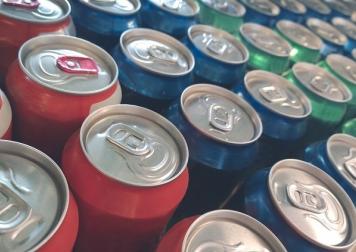Sending Type 2 Diabetes Into Remission
A recent study appearing in the Journal of the American Medical Association examined the relationship between an intensive, long-term weight-loss intervention and the frequency of remission from type 2 diabetes to either prediabetes or normoglycemia.
The study was initiated because researchers felt that the remission of type 2 through lifestyle intervention was unclear. How often does it happen? To what degree is it achievable? They asked some reasonable questions and sought meaningful answers.
Trial Design
This was a 4-year randomized, controlled trial that compared an intensive lifestyle intervention (ILI) with a diabetes support and education control condition (DSE) among 4,503 U.S. adults whose body mass index (BMI) was 25 or higher and who had been diagnosed with type 2 diabetes.
- The ILI group (2,241 patients) received weekly group and individual counseling for six months, then three sessions monthly for six months, followed by twice-monthly "contact and regular refresher group series and campaigns" for the next three years.
- The DSE group (2.262) received 3 group sessions per year on diet, physical activity and social support.
The study used the following outcome measures: Partial or complete remission of diabetes, defined as transition from meeting diabetes criteria to a prediabetes or nondiabetic level of glycemia (fasting plasma glucose
Results
After the first year, those in the ILI group lost a lot more weight than the DSE group, and they were much more physically fit than the DSE group.
Those in the ILI group were also far more likely to experience diabetes remission (either partial or complete) than those in the DSE group:
- - Remission rates among the ILI group after one year: 11.5%
- - Remission rates among the ILI group after four years: 7.3%
- - Remission rates among the DSE group after one year: 2.0%
- - Remission rates among the DSE group after four years: 2.0%
With regard to continuous, sustained remissions among the ILI group:
- - Lasting at least 2 years: 9.2%
- - Lasting at least 3 years: 6.4%
- - Lasting at least 4 years: 3.5%
With regard to continuous, sustained remissions among the DSE group:
- - Lasting at least 2 years: 1.7%
- - Lasting at least 3 years: 1.3%
- - Lasting at least 4 years: 0.5%
Conclusions
To begin, it's reasonable to conclude that remission rates in general were fairly low, peaking at just 11.5% (researchers called them "modest"). However, "an intensive lifestyle intervention was associated with a greater likelihood of partial remission of type 2 diabetes compared with diabetes support and education."
Commentary
Many in the medical community are urging that ILI not be called a "cure," and that's fair. But when you have 257 people out of 2,241 who took part in intensive lifestyle intervention and experienced some level of remission for at least the first year, when they no doubt received far more social support and other incentives than the remaining three years, compared to just 45 people out of 2,262, even if those percentages aren't high it's difficult to ignore: It is possible to put type 2 diabetes into some level of remission.
The question is, what separated these people from the others? Was it something simply in their dedication to the program? Their constitutions? Or was it something about their disease? Their own body chemistry?


































